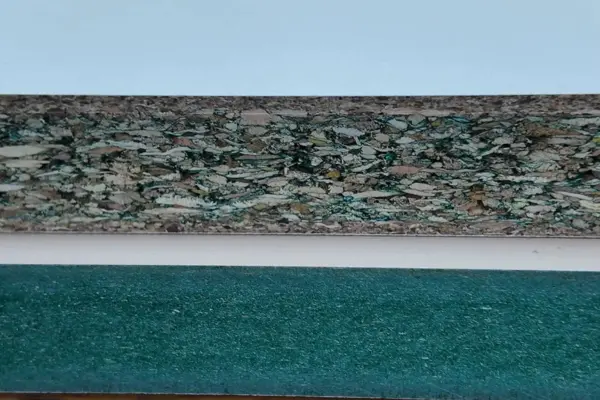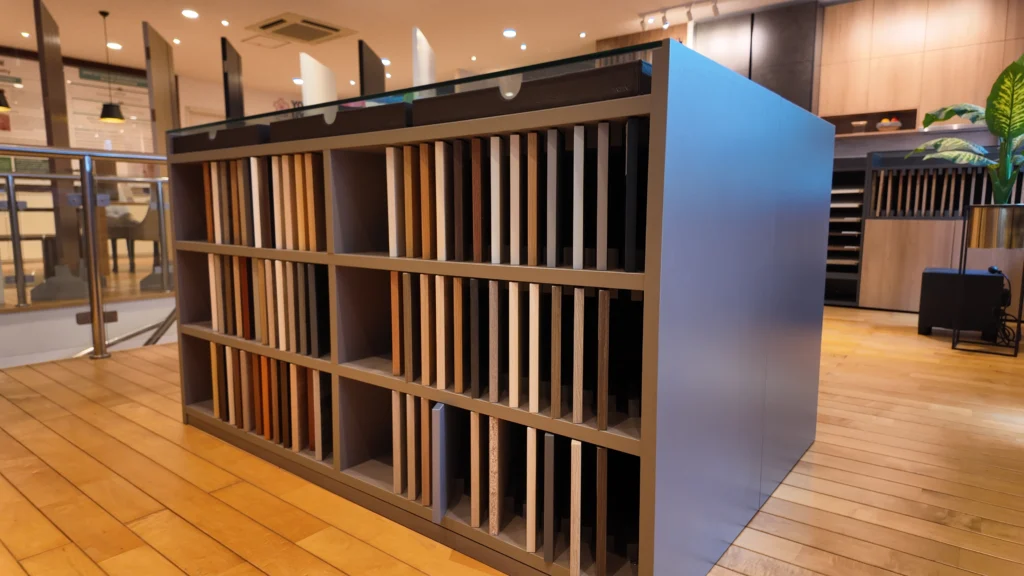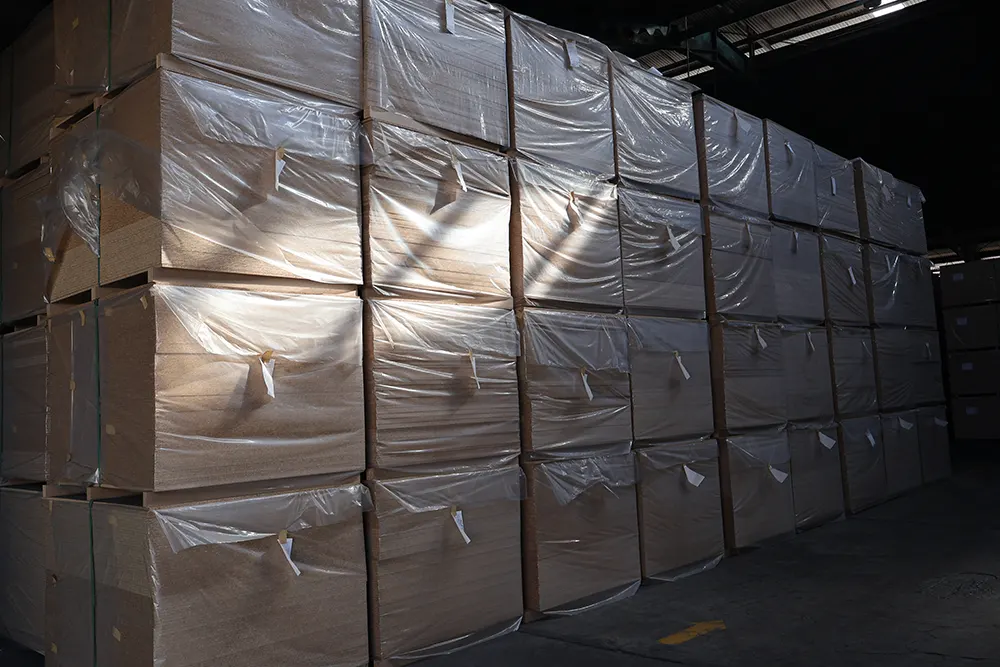When choosing materials for furniture and interior construction projects, two popular options are MDF and particle board. However, understanding the advantages, disadvantages, and best uses of each material can often be challenging. For those seeking a cost-effective and efficient option, especially for simpler projects, particle board is an attractive choice. This article will compare MDF vs particle board, focusing on the uses, benefits, and drawbacks of particle board.
What Are MDF and Particle Board?

MDF vs Particle Board: Understanding Characteristics and Composition
Manufacturers make particle board by compressing wood shavings or coarse particles with resin. It’s lighter and more affordable than MDF, making it popular for budget-friendly furniture. Although particle board is economical, it tends to be less durable than MDF, especially in humid conditions.
Manufacturers make MDF (Medium Density Fiberboard) by combining fine wood fibers with resin and then compressing them to create a denser, stronger material. People often use MDF for high-quality furniture projects that require a smooth and aesthetically pleasing finish. By understanding MDF vs particle board, readers can evaluate which material best suits their project needs.
Case Study: The Use of Particle Board in the Furniture Industry
In the furniture industry, which values efficiency and mass production, particle board is the primary choice for many products, especially flat-pack furniture. Brands like IKEA often use particle board because it enables them to produce lightweight, easy-to-assemble, and affordable furniture. Furniture Today reports that manufacturers use particle board in approximately 60% of budget-friendly furniture.
This study shows that in the MDF vs. particle board debate, particle board is popular for mass-produced products, offering consumers functional and affordable options.
Advantages and Disadvantages of Particle Board
Benefits of Particle Board for Budget-Friendly Projects
Particle board offers several advantages that make it an ideal choice for budget-friendly or short-term projects. Here are some of the main benefits:
- Affordable Price: Compared to MDF, particle board is more economical, making it a cost-effective choice.
- Lightweight and Easy to Move: Particle board is lighter, making it suitable for furniture that may need to be moved frequently.
- Eco-Friendly Use of Wood Waste: Made from wood remnants, particle board is an environmentally friendly choice as it reuses materials that would otherwise be discarded.
Tips for Using Particle Board Efficiently
If you choose particle board for your project, here are some tips to maximize its durability and appearance:
- Avoid Using in Wet Areas: Particle board is sensitive to moisture, unlike MDF, which is slightly denser. Use this material in dry areas to prevent damage or swelling.
- Add a Protective Layer: To increase durability, add a laminate or melamine coating on the particle board surface to make it scratch-resistant and easier to clean.
- Choose for Furniture That Doesn’t Require Heavy Load: Particle board is better suited for lightweight furniture compared to MDF, which is stronger, such as wall shelves, small tables, or furniture that won’t bear heavy weight.
According to Sarah Lin, a furniture raw materials expert, “Particle board is a wise choice for those looking for cost-efficiency in furniture projects. With proper coating, particle board can be more durable and attractive.”
Read more: Hardwood Particle Board: The Ultimate Choice for Durable Furniture
MDF vs Particle Board Comparison in Daily Use
Particle Board Advantages in Furniture Applications
Particle board is often used in flat-pack furniture or DIY (Do-It-Yourself) projects because it is lightweight and easy to assemble. This material is ideal for items like study desks, bookshelves, and simple cabinets. Although it is not as strong as MDF, particle board is sufficient for furniture in dry areas and that does not require heavy weight-bearing.

- Flat-Pack Furniture: In the MDF vs particle board debate, particle board enables the mass production of furniture that is easy to assemble, making it popular among consumers who value convenience.
- Cost-Effective for Simple Furniture: For lightweight furniture, particle board fulfills basic functions at a lower cost.
- Ideal for DIY Projects: Being easy to shape and affordable, particle board is a preferred material for DIY projects, especially for beginners.
Drawbacks of Particle Board and Alternative Solutions
While particle board has many advantages, it also has some drawbacks worth noting in the MDF vs particle board comparison:
- Sensitive to Moisture: Particle board easily absorbs water, making it unsuitable for humid areas like kitchens or bathrooms. If it gets wet, it tends to swell and peel.
- Limited Strength: Compared to MDF, particle board is less capable of supporting heavy loads, so it is more appropriate for lighter furniture.
- Less Attractive Surface: The surface of particle board is rougher than MDF, so it may require a protective coating to look more appealing.
As a solution, if you need extra strength or a more attractive look, you might consider using MDF in specific areas and particle board for lighter, more economical elements.
Read more: Partikel Board Adalah (Particle Board is) a Durable and Versatile Material
MDF: A More Stable and Durable Alternative
MDF Advantages for Projects Requiring Greater Strength
Manufacturers and DIY enthusiasts use particle board in flat-pack furniture and DIY projects for its lightweight and easy assembly. MDF, with its smooth surface, is preferred for high-quality paint and laminate finishes, making it ideal for projects needing an elegant look.
- Resistant to Deformation: MDF resists deformation better than particle board, making it suitable for long-lasting furniture.
- Ideal for Finishing: MDF has a smooth surface ideal for painting or veneering, providing a more professional appearance.
- More Stable: MDF has higher density, so it is more stable in supporting heavy loads.
Tips for Choosing MDF for Projects
If you need a more durable material, MDF is a good choice. Here are some tips for using MDF:
- Use in Dry Areas: MDF is also sensitive to moisture, so it’s best to use it in indoor areas that stay dry.
- Consider Thickness: The thicker the MDF, the stronger it will be, suitable for heavier furniture needs.
- Add Waterproof Coating if Necessary: If used in slightly humid areas, add a waterproof coating to enhance durability.
According to Dr. Edwin Morgan, an interior design expert, “MDF offers an aesthetic solution with better durability. However, it’s important to consider the area of use so that the material remains optimal.”
MDF vs Particle Board Direct Comparison
The following table helps to see the main differences between MDF vs particle board:
| Aspect | Particle Board | MDF |
|---|---|---|
| Density | Low | High |
| Price | More Affordable | More Expensive |
| Water Resistance | Sensitive to water | Not water-resistant, requires coating |
| Aesthetics | Rough surface, requires coating | Smooth surface, ideal for finishing |
| Strength | Suitable for lightweight furniture | High, can bear heavy weight |
| Applications | Flat-pack furniture, shelves, small tables | Cabinets, wardrobes, doors |
Conclusion
In the MDF vs particle board comparison, each material has its own advantages and limitations. Particle board is a budget-friendly choice, ideal for lightweight furniture projects that don’t need extra strength or high aesthetics. Particle board suits DIY projects and flat-pack furniture well due to its affordable price and easy assembly. On the other hand, MDF is more suitable for projects that need strength and high-quality finishing.
With this understanding, you can choose the material that best fits your project needs, whether it’s using economical particle board or more durable MDF.

